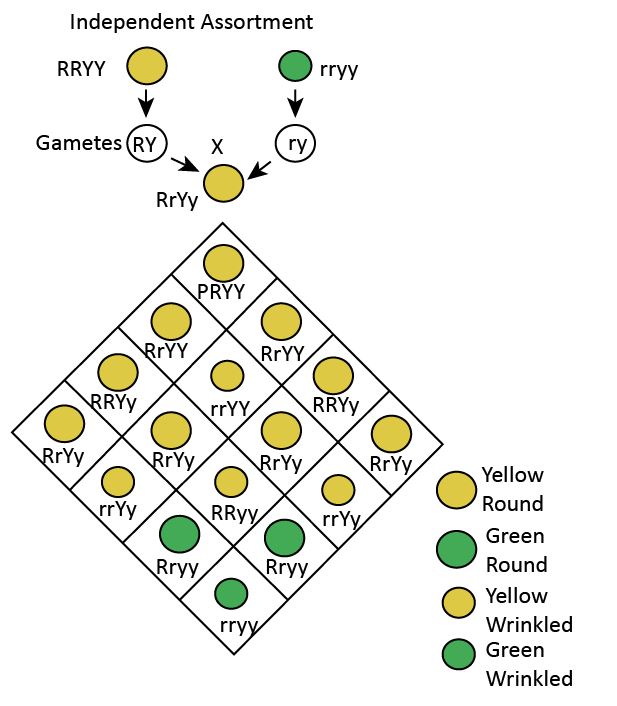Explain Dihybrid Crosses Reveal the Law of Independent Assortment?
The law of independent assortment was introduced by a scientist named Mendel. This law states that genes alleles of two or more will arrange independently in the form of gametes. During the process of meiosis, the independent assortment occurs. The resultant chromosome in the meiosis process is haploid rather than diploid.
The characters of each pair in the dihybrid cross will be independent with each other when the law of independent assortment applied to it. In simple words, the trait of one pair is separated from another pair independently at the time of formation of gamete.

Mendel did his experiment with pea plant consisting of round-yellow seed and wrinkled-green seed and observed a dihybrid cross. This will help to show the law of independent assortment with dihybrid cross. In the first filial (F1) generation, after the dihybrid cross, the progeny of round yellow seeds is obtained. In the F2 generation, a combination of seeds is obtained after self-pollination of the F1 generation.
The complete result of the dihybrid cross gives out the ratio of round-yellow, wrinkled-yellow, round-green, and wrinkled-green seeds which will be 9:3:3:1. This is the genotypic ratio, whereas the phenotypic ratio of the dihybrid cross will be 3:1 in colour (yellow: green) and 3:1 in shape (round: wrinkled).
Hence, this shows that both the characters that are colour and shape of the seeds are independent of each other, which states the law of independent assortment.
Step by step
Solved in 3 steps with 1 images









